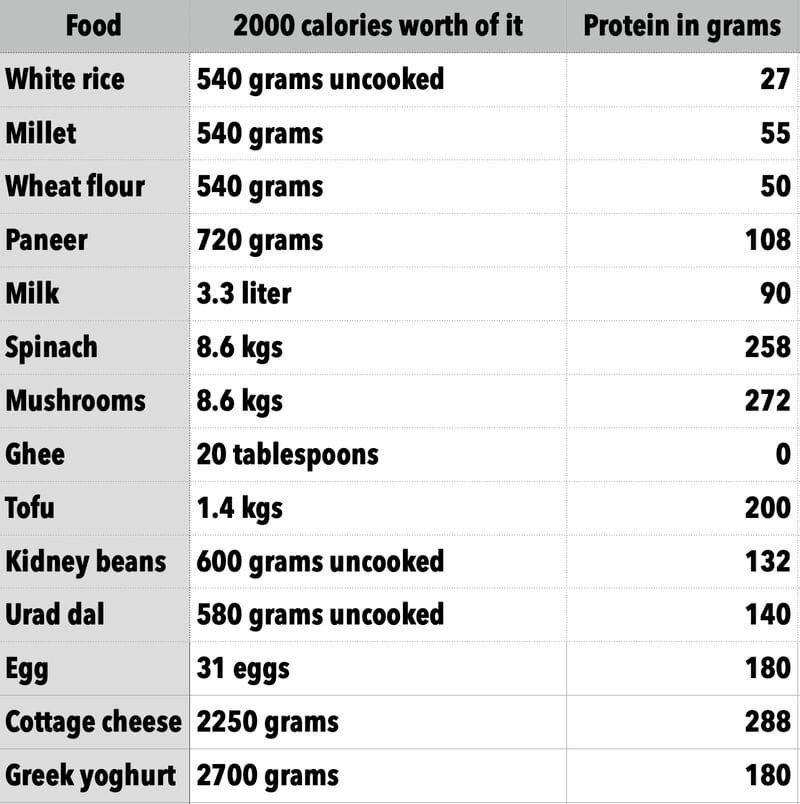Why some people could benefit from whey or a protein isolate : By the numbers

There’s a fair bit of skepticism as to why we need protein supplements. Can’t you get enough protein from whole foods? Yes, you could. Especially if you consume animal protein or processed plant protein such as soybean. But here’s the problem: the foods that dominate our daily eating are rice, wheat, grain and fat. Let’s say you are a 70-75 kg human being who requires somewhere between 70 and 100 grams of protein. And you can consume 2000 calories of energy.
Playing a crazy hypothetical, let’s say you can only consume one food a day. If all you eat is 2000 calories of ghee, you get no protein.
If all you eat is 2000 calories of rice, you’ll get less than a third of the protein you need in a day. If all you eat is millets or wheat, you’ll fall 25 percent short of your requirement. Now heading into lentils and tofu, these foods can comfortably take you past the required mark. Even if you account for the sub-optimal absorption. But neither of these food groups can practically cross the 10-15 percent of the daily consumption threshold. 140 grams of tofu every single day can be daunting. And 60 grams of uncooked dal isn’t volume that most people are accustomed to.
With dairy, paneer and cheese, the quality of the protein is high but the quantum is lacking. Even if dairy and cheese account for 20 percent of your total calories for the day, they will provide you with only 20-25 percent of your protein requirement. The sheer impracticality of getting any useful amount of protein from vegetables is self-evident in the numbers. You’ve got to be a cow or a chimp to go through enough fiber rich food to get a reasonable amount protein from vegetables. You can see how including eggs and unconventional foods such as cottage cheese can quickly skew the equation in your favour.
Takeaway
The key goal for most of the population is to achieve sufficient protein and fiber intake while not over-eating. Our food selection does not support this goal. When we don’t make a conscious effort to skew our rice, wheat, millet and oil intake towards eggs, cottage cheese, lentils, tofu and leaner dairy, we are unlikely to consume enough protein in our diet. In this scenario, a 20-25 gram serving of whey can make it convenient to reach our target protein intake. It can buy you time to change your food selection habits too. And at lower calorie intake levels (most Indians probably need less than 2000 calories), reaching protein sufficiency is even more challenging with our current food habits.
